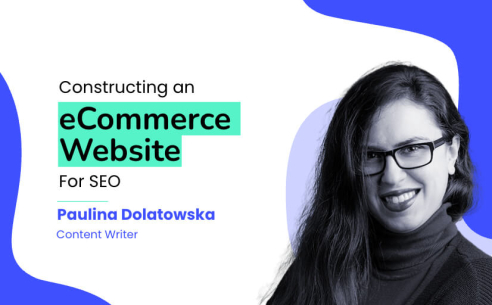Explore tangential SEO and whether it can present a huge SEO opportunity for your business, or is just a new buzzword.
What is Tangential SEO: A New Buzzword or Huge Opportunity?
Author: Rowan Collins, Senior Digital Strategist

It has been an exciting yet anxious time for search engine optimisation. The progressive march of artificial intelligence is met with jubilation by some and deep scepticism by others. Amidst the frenzy you may have missed the new kid on the block: Tangential SEO.
It is a newish term picked up by several communities, including a recent post by Search Engine Journal, however, the discussion on tangentially relevant content has existed for years.
An article published as early as 2017 by Moz titled Tangential Content Earns More Links and Social Shares in Boring Industries addresses the exact same idea.
It’s safe to say tangential SEO is a new buzzword, but it’s also an old concept. Here’s what you need to know:
What Is Tangential SEO?
Tangential SEO is the intentional decision to prioritise and create content not related to your core business offering but nevertheless reaches your target demographic.
Perhaps the best example comes from the world’s largest tire manufacturer, Michelin.
How did a tire manufacturer from France become the world’s most prestigious reviewers of fine dining? The connection is tangential. Early adopters of automobiles needed a reason to travel; Michelin needed drivers to replace tires.
This insight was simple, but leveraging it gave them an enormous competitive advantage.
Keep reading below to discover when to use this tactic and when to focus elsewhere.
When to Use This Tactic
As the saying goes – timing is everything.
How and when you expand your focus into other areas must be deliberate and calculated. Strategy is all about choice, and tangential content can be a distraction if not approached with intention and insight.
You don’t wake up one day, grab a coffee to go, then casually send a memo for your team to mass-produce content about restaurants because we all need to eat food. Such an approach is the fast way to achieve failure.
There are two great reasons to expand your content horizons:
- Your business is an upstream supplier, so you want to build downstream demand
- Your business has exhausted all topically relevant content
Generating Demand
Let’s go back to the case of Michelin for a minute. Founded in 1889 in the city of Clermont-Ferrand, long before the Citroën Type A popularised cars in Europe, André and Édouard Michelin set out to save their grandfather’s rubber manufacturing business.
It wasn’t until a cyclist stopped by in the plant’s courtyard with a flat tire that they hit upon their first major innovation. Previously, tires were glued on and a repair took several hours for glueing and drying. The Michelin brothers used this insight to create a tire that didn’t require glue, and in doing so, they radically transformed the industry.
In the early 20th century, automobiles remained a luxury for the rich and adventurous, so the demand for tires was low by today’s standards. To encourage people to drive, the first Michelin guide was released in 1900. Over the years, they refined the guide and by 1926 they reached the conclusion personal travel by car would be the future – and fine food could serve as the motivation people needed.
The key to the story is that the Michelin brothers continuously looked for ways to innovate. To them, the fine dining industry became an indistinguishable part of the automobile industry. Now, almost a century later, they’re leaders in both; tangential content served as a reinforcement to their business model, not a distraction away from it.
Expanding Horizons
Now let’s imagine a coffee chain. There is an enormous opportunity to target relevant keywords, but after a while, you find yourself running out of steam (pun intended), or maybe you’ve got a new insight about your customers and want to expand your horizon.
Now is the moment when tangential content may have something to offer your business.
If you consider your customers in a more holistic sense, you might notice that people who visit your chain prefer to sit alone and read a book. Suddenly, a book club idea is great – but for the same reason as before: It reinforces your core business goals.
By itself, tangential content isn’t particularly helpful. It needs to reinforce your business goals.
When To Avoid Tangential Content
If the previous two points don’t apply to you, your business hasn’t exhausted your pool of content, and you’re not struggling with demand in your industry – focus your time elsewhere.
However, aside from those, there are a few other reasons not to invest time and effort into tangential content:
- Diluting Resources
- Negative Sum Competition
Diluting Resources
Strategy is always a choice. Two of your most precious resources for any venture are time and money. When you choose to prioritise tangential content, you’re diverting time and money away from other areas of your business.
A great example is Pringles, a company first introduced to the market in 1968 and sold for $2.7 billion to Kellogg’s in 2012. The business was making $1.5 billion in revenue – why did Procter & Gamble sell this successful product?
The answer is that although the product was a success, it was their only business left in the food industry. Allocating time and resources to supporting this product would take away from their main focus, so selling the business makes perfect sense.
The same can be said for a tangential SEO strategy; if it isn’t going to reinforce your core business goals – then it’s time to pivot.
Negative Sum Competition
Advocates for tangential SEO see the opportunity in reaching out from saturated markets, but doing so also increases the surface area of your business. You soon find that these green pastures have a wasp nest, and unlucky for you – you hit it on the way in.
When Procter & Gamble invented a new technology capable of competing with the best bin bags and cling wrap in the market, they had the opportunity to enter the competition. If things went well, this market could be extremely lucrative, but if competitors reacted poorly, then they were opening a black hole to suck up cash.
Upon scanning the environment, they realised this venture would likely invite an amount of competition that would be bad for all businesses involved – not ideal.
But the story doesn’t end with them walking away with tails sufficiently tucked between their legs. Instead, they found a different strategy for success. In 2003, P&G entered a joint venture with Clorox, the owners of Glad, and chose to avoid the wasp nest that waited for them if they launched their own product. Now, twenty years later, the partnership is ongoing.
This story helps us understand that competition, while healthy, can become negative-sum. When entering a market, if you’re not growing the market segment, all you’re really doing is increasing the size of your competition.
The Verdict on Tangential SEO
If we look at a business like Michelin, we see huge potential in leveraging consumer insights to grow business, even through unconventional means. But if we look at Procter & Gamble, we see a company that is happy to say no to markets that aren’t in line with their strategy.
Whether this approach is right for you or not will depend on whether you’ve got unique customer insight to leverage and expand the market. If you’re not struggling to generate demand and there is room for innovation in your existing market – we recommend restructuring existing market boundaries.
More articles
View more of our research.

Constructing An eCommerce Website for SEO
Find out how to construct an eCommerce website that is great for users and accessible for search engines.

Educating Clients on the Value of SEO: A Guide for Marketing Managers
Find out how marketing professionals can transform their clients' perception of SEO by educating them about the value that it can bring to their businesses.
